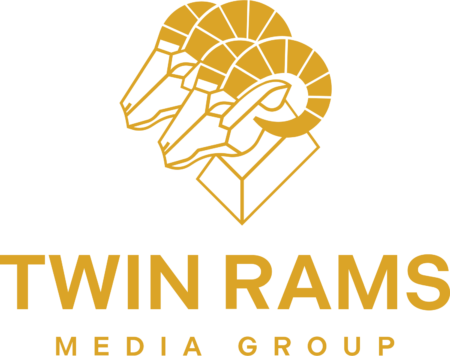On-page SEO is a good stepping stone when it comes to your SEO (search engine optimization) efforts for your digital marketing. Believe it or not, your business’ website can greatly benefit from simple auditing and fixes on each page. But what is on-page SEO? Why is it important, exactly? And what on-page SEO factors do you need to aim for?
What is on-page SEO?
On-page SEO (also called on-site SEO) refers to the practice of optimizing individual web pages of your website to improve their visibility and ranking in search engine results pages (SERPs).
The primary goal of on-page SEO factors is to make your web pages more attractive and relevant to search engines like Google, Bing, and Yahoo. This is so that they are more likely to rank your content higher for specific keywords or phrases. This can lead to increased organic traffic to your website.
On-page SEO is just one aspect of search engine optimization. However, it is one of the fundamentals of digital marketing and has a significant impact on your website. It complements off-page SEO, which involves building backlinks and establishing your website’s authority and reputation on the internet. Together, they help improve your website’s chances of ranking higher in search engine results and attracting more organic traffic.
Why is on-page SEO important?
On-page SEO is important for several reasons. It plays a crucial role in your overall search engine optimization strategy, which will then boost your website significantly.
Here are the top reasons why on-page SEO is important:
- Improved Search Engine Rankings: When on-page SEO factors are done effectively, they can help your pages rank higher in search engine results pages (SERPs). Higher rankings mean increased visibility to potential visitors, leading to more organic traffic to your website.
- Relevance to User Intent: On-page SEO helps align your content with the search intent of users. By optimizing your content for relevant keywords, you ensure that your pages are more likely to appear in front of users looking for products or services related to your niche. You’ll also have more chances to provide information for specific inquiries from the audience.
- Better User Experience: Good on-page SEO factors and practices involve improving the overall user experience on your website. This includes making your content more organized, accessible, and readable. This can lead to longer time spent on your site and lower bounce rates.
- Increased Click-Through Rates (CTR): High-ranking sites also have better CTR. According to Search Engine Journal, the first Google mobile search result has an average organic CTR of 26.9%. Crafting compelling title tags and meta descriptions as part of on-page SEO can encourage users to click through to your website from search results.
- Reduced Bounce Rates: When your content aligns with user expectations and provides value, visitors are less likely to bounce back to the search results immediately. Lower bounce rates can positively affect your SEO, as search engines interpret this as a signal that users find your content relevant, beneficial, and engaging.
- Enhanced Mobile Experience: As mobile usage continues to grow, ensuring that your web pages are mobile-friendly is crucial in digital marketing. Effective on-page SEO includes optimizing for mobile devices, which can lead to better rankings, especially in mobile search results. In fact, according to HubSpot, 73.1% of web designers think that non-responsive design is a top reason why visitors leave a website. Your business’ website needs to be mobile-ready and responsive for the users.
- Structured and Accessible Content: Proper on-page SEO practices involve using header tags, organizing content logically, and optimizing images with alt text. This not only helps search engines understand your content better but also makes it more accessible to individuals with disabilities. This improved overall inclusivity on your website.
- Competitive Advantage: By consistently applying on-page SEO techniques, you can gain an edge over competitors who may not be as diligent in optimizing their web pages. This can help you establish authority and credibility in your industry or niche. SEO-optimized pages also help you stand out from the perspective of the audience and your customers.
- Analytics and Data-Driven Improvements: On-page SEO efforts often involve monitoring and analyzing data. This includes page performance, keyword rankings, and user behavior. This data can guide your ongoing optimization efforts, allowing you to refine your content and strategy over time.
- Cost-Effective Strategy: While other SEO techniques like off-page SEO and link-building practices often require more resources, on-page SEO can be implemented at a relatively low cost. It’s a cost-effective way to improve your website’s search engine visibility and user engagement without spending a lot of money.
Overall, on-page SEO is significant as it has a direct impact on your website, the user experience, and your brand’s online presence or digital marketing. Execute on-page SEO elements correctly, and it will increase your organic traffic, improve user engagement, generate more leads, make sales, and provide the right information to your audience.
What are the important factors for on-page SEO?
On-page SEO involves elements that need to be optimized to improve the quality of the page and the overall site for search engines. Here are some of the essential on-page SEO factors that will help boost your website:
1. Content
You’ll often hear the phrase “content is king”, and that statement still rings true today. But only if it is high-quality and optimized.
Create high-quality, informative, and engaging content that adds value to your audience. Ensure your content is well-researched and comprehensive, and addresses the needs and questions of your target users. You also need to format your content correctly. Put in headings and subheadings, and include internal links to your content to further boost authority and relevance.
2. Keywords
Well-researched keywords will place your content and your website to where they need to be and show them to the right audience. Identify relevant keywords and phrases that your target audience is likely to use when searching for content related to your website. You can even use keyword research tools to find high-traffic, low-competition keywords.
Another good on-page SEO practice is placing your target keywords strategically in your content. This includes the title, headings (H1, H2, H3), and throughout the body text. Use keywords naturally and avoid keyword stuffing, as they can harm your overall SEO.
3. Title Tag
The title tag allows you to give a specific web page a title. They can be found in the browser title bar as well as in the search engine results pages (SERPs).
Make sure to craft unique and descriptive title tags for your website pages. It’s also best to include the primary keyword near the beginning of the title and keep it under 60 characters to ensure it displays properly in search results.
4. URL structure
The page’s URL is also one of the crucial on-page SEO factors. Create clean and user-friendly URLs that include relevant keywords and are easy to read. Avoid long, complex URLs with unnecessary parameters. URLs with a clear hierarchy of the information on the page also have better chances of being understood by the search engines and being given relevancy.
5. Visual assets
Visual assets like photos, infographics, and videos boost your SEO as well. It’s been reported by MarketingCharts.com that more than 36% of US consumers actually use visual search when they’re doing online shopping. This means if you don’t have high-quality and engaging images on your webpage, you might be losing views and sales. If you’re an e-commerce website, this is all the more reason for you to add images to your product pages and more.
6. Image optimizations
And of course, if you have visuals on your page, you also have to ensure that they are optimized, not just high-quality. File names and alt texts help search engines understand the context of the images and how they relate to the textual content. Optimize images by using descriptive file names and alt text to make sure you’re boosting on-page ranking factors.
7. Meta Description
Write compelling meta descriptions that summarize the page’s content and encourage users to click through. While meta descriptions don’t directly affect rankings, they can influence your click-through rates (CTR).
8. Page load speed or site speed
Improve your website’s page load speed by optimizing images, leveraging browser caching, and using content delivery networks (CDNs). Faster-loading pages improve user experience, boost rankings, and improve digital marketing efforts.
9. Schema markup
You can also implement structured data markup (schema.org) to provide additional context to search engines about the content on your web pages. This can result in rich snippets in search results.
10. E-E-A-T
And of course, Google’s new EEAT guidelines are a must if you want search engines to rank your content higher in search results. EEAT refers to Experience, Expertise, Authoritativeness, and Trustworthiness. While this is not a direct part of on-page ranking factors, EEAT is used to determine the quality of content and how useful it can be to the users. Because of this, EEAT is now an important concept when it comes to on-page SEO.
No matter what angle you look at, on-page SEO has lasting effects on your website, especially if you continuously modify and optimize various on-page SEO factors.
Need more help with your search engine optimization offers? Twin Rams Media has SEO experts ready to help you and your business! Talk to us now to get started.
References:
https://www.searchenginejournal.com/on-page-seo/essential-factors/
https://www.semrush.com/blog/the-most-important-on-page-seo-factors/
https://moz.com/learn/seo/on-page-factors


